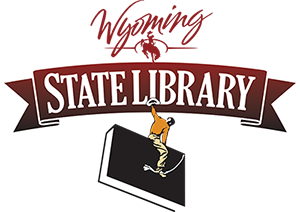 From Library Research Service (LRS)
From Library Research Service (LRS)
Welcome back! We left off talking about why you would use observations to collect data. Observation can be a great data collection tool when you want to see how different people interact with each other, a space, or a passive program. Observation is also helpful when it is difficult for someone to answer a question accurately, like when you ask them to remember something they did or—particularly with children—if you ask them to give critical or written feedback, both of which can be developmentally inappropriate.
To review, our big research question is: “Does attending storytime help caregivers use new literacy skills at home?” Our small questions within that big question are:
- Were caregivers already using literacy skills at home prior to attending a storytime?
- Are caregivers learning new literacy skills during storytime?
- Do caregivers use new literacy skills from storytime at home?
After thinking through these in our last post, we decided that it would be both helpful and realistic to observe caregivers and their children in the library. This won’t tell us about caregivers’ behavior at home, but it’s not an option for us to follow them around their homes. While observing caregivers in the library won’t tell us what they are doing at home, it still helps us see if they’re learning skills during storytime that they’re using outside of storytime.
Ok, so how would we actually do this? Here are the key elements of any observation:
- Get permission from your participants
- Decide how you will approach the observation
- Focus in on some specific things you’re looking for
- Take notes or videos of what you’re observing
- Code the notes or video to identify patterns
For the rest of this blog post, we will focus on the first point. It’s important to get started on the right foot.
Why is getting permission important?
We’ve discussed informed consent before in this blog series, and it is still important with observations. If you came to your library and a staff member followed you around the whole time without an explanation, it would feel weird and even invasive. Now, you may be thinking, “Wait a minute, if people know we’re watching, they’re going to act differently!” You’re exactly right. But the reality is, people are going to know you’re observing them no matter what. Even if you think you could soundlessly skulk around the stacks, most people are going to sense something weird is going on.
Remember–we don’t want to be creepy when we’re doing research! Watching people without asking their permission is 1) pretty creepy, 2) not good for building and maintaining trust with our users, and 3) violates one of our core library values of privacy. Ethically, we have to ask people if it’s ok to observe them while they’re in the library, even if it does change their behavior.
How do you ask permission to observe?
In this example, you could explain at storytime that you’re doing a research project to improve storytime. You are looking for some volunteers who spend time at the library outside of storytime to let you observe them interact with their child. If they are interested, you have a form they can sign, and the next time they’re hanging out at the library, you’d like them to come say “hi” at the desk in the children’s area. That way your staff know when they are in the library and the staff member observing them can introduce themselves too, which makes the whole thing less awkward.
As part of the informed consent process, remember that you need to address both that the participants can stop participating at any time, for any reason, and how you will protect their privacy. These elements are particularly important during an observation of caregivers and children. What identifying information do you absolutely need? The more anonymous the data can be, the better. Make sure you also establish a clear and easy way for the caregiver to end the observation while it is happening.
In the next blog post in this series, we will explore the different approaches to observation. After you’ve gotten permission, how do you actually sit, watch, and collect meaningful data? Join us next time to find out!
LRS is part of the Colorado State Library, a unit of the Colorado Department of Education. We design and conduct library research for library and education professionals, public officials, and the media to inform practices and assessment needs.
